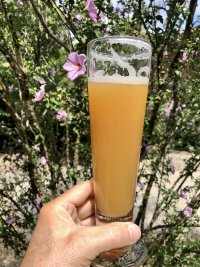- Joined
- Nov 26, 2021
- Messages
- 69
- Reaction score
- 271
First pour of hb neipa, 5,0%, citra, citra Lupo, mosaic, nectaron & motueka (1.5 oz/gal DH). Intentionally low ABV for nice summer days. Tastes great and very happy with results. Followed most recommendations from this string, aldc, campden, Fermcap-s, A24, oxygen control, ferm & serve from same corny keg with top draw. I’m loving this batch and should get better with age.














![Craft A Brew - Safale S-04 Dry Yeast - Fermentis - English Ale Dry Yeast - For English and American Ales and Hard Apple Ciders - Ingredients for Home Brewing - Beer Making Supplies - [1 Pack]](https://m.media-amazon.com/images/I/41fVGNh6JfL._SL500_.jpg)














































